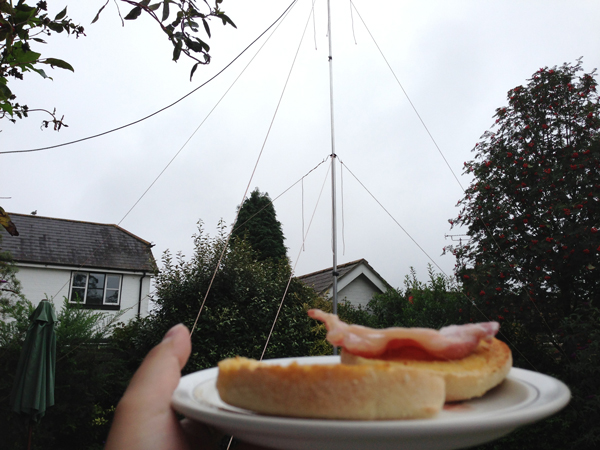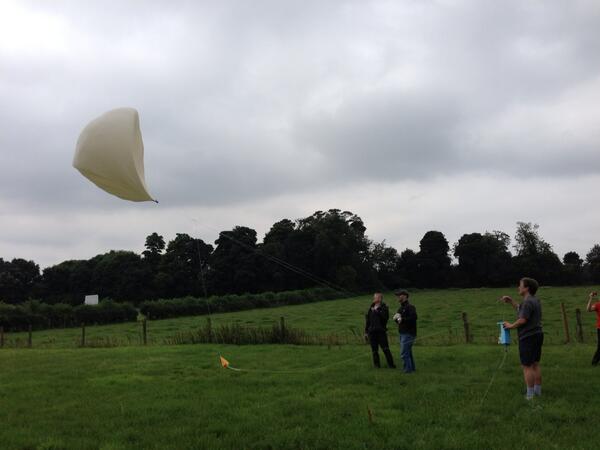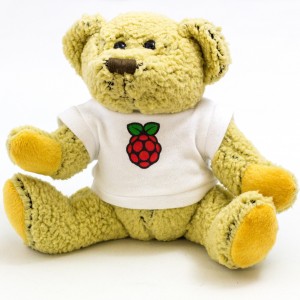|
Kobo for the first time ever conducted a massive launch event in New York City, where media from all over the country converged to check out all of their hardware. Not only did the e-reader company announce a bevy of new tablets, but unveiled their brand new magazine service. Kobo Magazines current has over 250 titles available and more are being added every day. They intend on launching the service in October and hope to have over one thousand issues available. Major publishers have been attracted to the platform and we will see Conde Nast and Hearst contribute all of their major assets. Last year Kobo made their first major acquisition with Aquafadas, who specializes in plugins and tools aimed to assist publishers to digitize their content and make it available for magazine or graphic novels. The new Kobo magazine initiative is the first time the technology will be deployed and distributed to publishers to help put their content in the Kobo ecosystem. I have heard that the entire process is super easy and will give customers who buy the 10 HD the chance to get the same resolution that the printers get at the presses. Magazines will be available in single issue and yearly subscriptions. Currently there is no system in place for publishers to give deals on subscription rates. The current Holy Grail for digital magazines are to offer a reduced rate for the first month or year and then jack the prices up. Most companies cannot do this, even though its the way print has always worked. Kobo has assured me that as the platform matures, they will offer this. What are you going to pay for magazines? They will be very competitive and the exact rates are set by the publishers and Kobo gets an indeterminate cut of each sale. I talked to a number of high level executives and no one would give me a definitive answer. They would only say that it was financially worth it. One of the most exciting aspects of the magazine platform is that back issues will be available on day one. Most publishers really want to be able to sell previous issues and offer their compete catalog. This is useful for research or for collectors, I know many of my friends parents have the complete collection of National Geographic in physical form and its currently impossible to do it digitally. This is something that is important to both publishers and Kobo, and they are implementing it right away, Instead of consistently pinching and zooming like most major magazine apps, Kobo is doing something different. They are employing Guided Reading which uses a simple one-tap interface that intelligently moves from one column of text to the next. Removing distractions so Readers can focus on the content, Kobo eliminates the need for toolbars – creating a more crisp and clean interface. The magazine content system will be available in October, with the launch of the Kobo Arc 10 HD and 7 HD. By the end of the year it will be available on Android and other devices. Don’t expect to ever see it on their e-Ink readers, as you don’t really get a good experience. Kobo Magazines to Launch this October is a post from: E-Reader News |
A Semi-automated Technology Roundup Provided by Linebaugh Public Library IT Staff | techblog.linebaugh.org
Tuesday, August 27, 2013
Kobo Magazines to Launch this October
Marvel Beefs Up Marvel Unlimited App—and Adds Something Extra
|
On Monday, Marvel released an update for its Marvel Unlimited iOS and Android apps that addresses the two biggest complaints people have had about it: Not being able to download enough comics and not being able to find comics in the first place. And for fans who want something tangible to go with their digital comics, they have just launched Marvel Unlimited Plus. Marvel Unlimited is a subscription service that allows the user access to over 13,000 Marvel comics as long as the subscription is active; it costs $9.99 a month or $69.00 a year. It’s kind of clunky on a computer, but earlier this year they released iOS and Android apps that are much easier to use. The apps allowed readers to download up to six comics to for offline reading, which many readers felt wasn’t enough, and as I noted in my review of the iOS app, it was often hard to find specific comics. This week’s update increases the number of comics that can be downloaded to 12 at a time, and it also allows the user to search for a comic by publication date. The search function is a little clunky: You can scroll through years or month/year combinations, but you make your choice by clicking “done,” and then you have to touch the “search” button to see the comics. When you are done with the page, you hit “cancel” to return to the search page. It’s not particularly intuitive—the red “done” button feels like it’s going to close out the page, not move you to the next step, and on the results page, a simple back button would be much clearer than “cancel.” Still, just being able to do this is a step in the right direction. Marvel Unlimited Plus is sort of a platinum version of Marvel Unlimited. The annual fee is $99, and for your extra thirty bucks you get a welcome kit that includes a special Ultron figure and an issue of Age of Ultron with a variant cover. Plus you get a membership card—what, no decoder ring?—and other perks such as “special Marvel news and discounts,” which sounds like unlimited e-mails to me. In an interview with USA Today, senior product manager Julia Druk called Marvel Unlimited Plus “a dramatic expansion of the benefits we’re offering to our members,” adding, “Instead of a relaunch, it’s more of an expansion of the platform to become that ultimate fan experience and offer the best part of Marvel — not just the best of digital comics.” Marvel Beefs Up Marvel Unlimited App—and Adds Something Extra is a post from: E-Reader News |
A Rundown on the new 6-inch Kobo Aura eBook Reader (Pre-Orders Live)
| Kobo just introduced a smaller version of their special edition Kobo Aura HD, simply called the Kobo Aura. It’s a lot like last year’s Kobo Glo, which is going to remain on the market along with the Kobo Mini, but it comes with a new design and is being marketed more as a higher-end version […] |
URL: http://feeds.the-ebook-reader.com/~r/feedburner/cmWU/~3/fDmKQDHryB0/
Hands-On with the Kobo Arc HD
|
Good e-Reader is live at the Kobo launch event today, in which the company is expanding their tablet line with the unveiling of the Kobo Arc 7 HD. This new device brings next generation screen technology, and packages it unlike any other device on the market. The core focus is, of course, the e-Reading experience, which refines book discovery. Hardware The Kobo Arc HD features a seven inch capacitive touchscreen display with a resolution of 1920×1200 pixels. It currently has over 323 PPI and will play back videos in pure 1080p. This is quite an upgrade in screen technology over the original Arc, which only had 1280 x 800 HD resolution and 215 PPI. Underneath the hood is an Nvidia Tegra 3 quad-core processor that is running a very solid 1.7 GHZ. There is also 1 GB of RAM and 16/32 GB variants for storage space. There is no expandable storage with this model, so make sure you buy the one that suits your needs. One thing Kobo has added to the Arc HD is the inclusion of a Micro HDMI port. This will allow you to hook it up to your television or projector. This is very useful, as not many e-reading focused tablets even bother with HDMI. Other ports include Micro USB, 3.5 mm headphone jack, front facing 1.3 MP camera and a rear facing speaker. The speaker is actually positioned right at the top of the device, and looks to be creeping to the top of bezel. The hardware feels very slick and polished and is a tremendous upgrade from the original Kobo Arc in every way. The HD moniker is very relevant and it destroys the current Kindle Fire HD 7 that has an aging 1280×800 resolution. Software The Kobo Arc 7 HD is running on the Google Android operating system and is running version 4.2.2. This brings it very up to date in terms of it being a current and relevant device. It also is officially Google Certified, which means you will have all of the normal Google apps loaded on it, such as Maps, Gmail, Google+, and much more. Kobo has revamped their UI and is more solid and intuitive than ever before. We will go hands on with the entire UI at the Kobo event and will update this post with our exact thoughts. What we do know from the press images is that tapestries seem to have gone away and there is a different UI. Kobo Pulse remains front and center, which gives a chatting area within eBooks for people to rate and review them. Pulse is a fairly cool innovation that has been around for quite a while. You can see how many people have read or are in the process of reading the same book as you. There are options to turn off spoilers, so you won't see comments from people who are further ahead in the book than you are. The entire UI is bright and colorful and makes it easy to interact with on a large touchscreen device. Reading Experience Kobo has also unveiled a new digital magazine section that should go live in the next few weeks. This expands on their previous newspaper offerings and they seemed to have signed some deals with major publishers. This rounds out their portfolio of 3.4 million eBooks, newspapers, and now, magazines. They have created a new way to view eBooks by having them take up a fair amount of screen real estate. You have large cover art images that are all positioned in various sizes, depending on what you accessed recently. Readers can organize and create their own collections, which are very handy on a tablet geared towards reading. They have really revised the way users can organize them while maintaining the spirit of a home library shelf, with the books stacked side by side. On the spine of the book is the book currently being read on that specific shelf, as well as the name of the collection. Wrap Up We are live at the Kobo event right now, and will be doing comprehensive hands on with video and photos. I will revise this post as we get more data and get a sense on the new software elements, what publishers have signed on with magazines and interviews with the development team. The exact pricing is $199.99 16GB/$249.99 32GB (US & Canada), €199.99 16GB/€249.99 32GB (EU), £159.99 16GB/£189.99 32GB (UK), $279.95 16GB/$329.95 32GB (Australia), $349.00 16GB/$399.00 32GB (New Zealand)
Hands-On with the Kobo Arc HD is a post from: E-Reader News |
Hands-On with the Kobo Aura 10 HD
|
At a highly anticipated product launch today in New York City, Kobo unveiled a brand new 10-inch tablet, the first they have ever issued. The Kobo Arc 10 HD seeks to capitalize on the recent industry trend of a large device to consume media and read digital books. In the past, Kobo has only developed seven-inch tablets, so they are stepping outside their comfort zone in a big way. Hardware The Kobo Arc 10 HD features a stunning 10-inch capacitive touchscreen with ten point multitouch. It has one of the best resolutions in the business with 2560×1600 pixels. To give you a sense of how great it is, the Apple iPad 4th generation is only capable of displaying 2048 × 1536 pixels. This tablet is powered by an Nvidia Tegra 4 quad-core 1.8 GHZ processor, which puts it faster than the other tablets Kobo revealed today. It also packs an impressive 2 GB of RAM and 16 GB of storage space. The entire internal structure is somewhat of a milestone for Kobo, as they have never released a more polished looking device, which seeks to really give them a competitive advantage over most large screen devices on the market. Kobo is actually in the best position to make a 10-inch tablet work because of their relationship with major booksellers all over the world. Canadians will really see these devices shine with the new Indigo Tech areas in forty different stores all over the country. If you decide to just watch videos, listen to audiobooks, or play a game, this tablet really performs. It has dual speakers at the very top of the rear panel, which even when lying on its back still gives you superb sound. It has Tru Audio settings, so you will be able to easily increase the low, mid, and high ranges to give it an extra boost. You can hook the Arc 10 HD directly up to your television with the included Micro HDMI port. You could even engage in a quick video call via the built in Microsoft and front facing 1.3 MP camera. There are not many buttons on this tablet, other than a power and volume buttons. The exact dimensions are 253 x 172 x 9.9 mm and it only weighs 627 grams. Typical users should be able to get a solid nine hours of battery life out of it with reasonable use. Like all tablets, if you tend to play HD games for hours at a time, it will drain faster. There's a very efficient Dual Band Wi Fi 802.11 a/b/g/n with 2×2 MIMO, Bluetooth v4.0, Miracast support for Wi Fi media streaming. On paper, this is the highest resolution tablet on the market with the best hardware as a driving force. Software
The Kobo Arc 10 HD is running one of the most current versions of Android for a new product hitting the market. Most tend to launch with Android 4.1 and say that they will get an upgrade soon after launch. This rarely, if ever occurs, and if it does, it's normally a painfully slow process. Kobo intends to release it with Android 4.2.2, which should provide a number of new features. Kobo signed a deal with Google a few years ago that made all of their tablets officially Google certified. This allows customers to access Google Play and select from over 500,000 apps currently available. You will also have a number of the essential apps on it, like Maps, Gmail, and Google+. There are also a number of new apps that will ship on it such as Pocket, Feedly, Cinema Now, MacAfee, Skype, and much more. Reading Experience
Kobo currently has a massive eBook ecosystem with over 3.5 million titles. They are unveiling a new magazine service in New York which I will report more on soon. There is no word yet on whether the Tapestries UI will be bundled on this, or if they are working on something new. What we do know is Kobo is revamping their library and collections menus. You can see from the picture above that they are going for a bookshelf approach when organizing your personal collections. This is actually fairly innovative, companies tend to just clone the way iBooks does their organizing, by having a wooden bookshelf with cover art appearing there. Kobo is thinking differently. The main library shelf has cover art with larger images to make it more touchscreen friendly. Wrap Up I am live in New York attending the Kobo press conference and will be providing videos, pictures, and more information in a few hours. This review will constantly be updated as more information comes in and I get a chance to interview some of the Kobo leads and developers. This is a small preview based on advanced press briefings and follow-up interviews with my contacts. MRSP – $399.99 (US & Canada), €379.99 (EU), £299.99 (UK), $499.95 (Australia), $599.00 (New Zealand)
Hands-On with the Kobo Aura 10 HD is a post from: E-Reader News |
Hands-On with the New Kobo Aura
|
Earlier in the year Kobo had released the Aura HD, which was a 6.7 inch e-Reader that bucked the trend of the standard six inch device. It was said when it was first released that this model was a limited edition and would not see the same sort of mass market push as the Kobo Glow. The Canadian company has gone back to the drawing table and just announced the new Kobo Aura. Hardware The Kobo Aura maintains the standard six-inch approach that the company made famous with their entire product line. It currently has a super high resolution e-Ink "Clarity Screen" with 212 DPI and sixteen levels of grey. This e-Reader has the exact same front-lite technology that was found on the original Kobo Aura HD. This will allow readers to adjust the brightness settings to suit their environment. Currently, Kobo has the best front-lit screen in the business and has surpassed Amazon in terms of quality. To turn the screen light on, there is a button at the very top and then a virtual slider bar to control the brightness. It is powered by the quintessential Freescale i.MX507 1 GHZ processor and has 1 GB of RAM. There are 4 GB of internal memory, which can be enhanced via the Micro SD Card. It seems that Kobo e-Readers still have expandable memory, which makes adding books to your collection fairly easy and painless. It also has over two months of battery life, which is ideal. Kobo has maintained the same rear panel that they debuted on the Kobo Aura HD. Instead of using the quilted back cover as they have always used for their three previous generations of e-Readers, they have moved to a more wavy design. When we talked to Kobo about this move at BookExpo America, they said they wanted to mirror how the pages of a real book looked, once it got lots of usage. If you maneuver a book and press towards the spine, you will see the pages on a diagonal angle, and this is the essence of the new rear shell. There are no manual page turn buttons, instead everything is done via the software. The only two buttons on the device are the power and light. There are only two colors available at launch, black and pink. Software Kobo maintains the same general user interface found on most of their modern day e-Readers and did not re-invent the wheel for the core user experience. The new screen has three main segments that display icons for everything done over the last twelve processes. This provides shortcuts to the user's most commonly accessed features, such as the web-browser, custom shelves, Reading Life, and ebooks. The Sync feature to fetch new content is now on the main screen, too, which is the only element that remains persistent. I actually like the more effective use of screen real estate. Rather than browsing four different sub-menus to access the internet browser, it will appear on the main screen if it has recently been used. I really like the dynamic nature of the new home screen, especially how common tasks and recently accessed elements from games to comics will appear as virtual shortcuts. One of the drawbacks is you can't long-press to move them around or save them as persistent pseudo-widgets. It would be amazing to organize your home area the way you like so it didn't change automatically, unless you wanted it to. Not only has the main screen changed, but most of the UI has undergone subtle enhancements over prior models. The Kobo Glow had a black area on the bottom of the screen, and when you initiated the scroll bar to find the illumination levels, the black bar would often show artifacts or ghosting from images. The new UI is completely white and most of the other sub-menus and headings are also pure white, which is a small but noticeable feature. One thing that Kobo does really well is provide a lot of customization options in the main settings menu. Users can set the page refresh rate for e-ink from one to six pages, providing the ability to set up different swiping motions to turn pages. This is optimal for people living in Japan and Asia, where the character layout is right to left and page turns are left to right. There are new games as well, such as a Words with Friends clone and a few others. Of course, users have a scrapbook to take advantage of the touchscreen and internet browser. There are enough options to get the most out of this e-reader, but not too many to overwhelm the average consumer. Kobo has made headlines from the beginning with their aggressive international expansion efforts. This allows customers to easily read books in their native languages. The Aura has core support for the UI and dictionaries for English, French, German, Spanish, Dutch, Italian, Brazilian, Portuguese and Japanese. All of the dictionaries are basically links which users can download them as needed, without having them all loaded on the device by default. This helps with memory and storage capacity. e-Reading Experience Kobo has debuted some new features that enhance the overall reading experience and aid readers in eBook discovery. The most exciting element is called Beyond the Book, and it allows readers to dive deeper into what their reading by tapping on highlighted words to discover related books, authors, articles, and more. They also showcase new Collections, which are pre-curated bundles of related authors, books, and articles based on themes. Kobo's entire line of e-Readers provides a tremendous flexibility in crafting a unique reading experience. There are eleven fonts bundled on the Aura and twenty-four different sizes. Advanced users can load in their own fonts that can be downloaded or purchased online. Kobo also has TypeGenuis, which offers further advanced options to adjust the weight and saturation. All of this comes with a before and after rendering on how the changes will look, comparing it against the existing settings. Kobo currently has a massive online bookstore with over 3.5 million titles where readers can easily purchase magazines, newspapers, bestsellers, comics, and kids' books. Wrap Up I am live at the Kobo Launch event in New York City and will be updating this post with videos, interviews and more pictures. I wanted to give you a preview of everything this new device brings to the table from press briefings and quick interviews ahead of the formal announcement.
Hands-On with the New Kobo Aura is a post from: E-Reader News |
Kobo’s New Arc 7 Review
|
Kobo has just unveiled the brand new Arc 7 e-Reading tablet at an event today in New York City. The Arc 7 is considered the spiritual successor of the Arc Android tablet released last year. This new model actually has lower resolution then the previous iteration but boosts up the hardware and performance. This new device is geared towards a more cost conscientious crowd and the estimated retail price will be $149.99 Hardware The Kobo Arc 7 features a seven-inch capacitive LCD touchscreen with a resolution of 1024×600 pixels. Kobo had to sacrifice screen quality to drive down the price, but if you are buying this just to read eBooks, magazines, and newspapers, it should be more than sufficient. The Kobo Arc HD 7 and the Kobo Arc 10 HD all use an Nvidia Tegra 4 quad core processor, but this model uses a budget-conscious MTK 8125 Quad-Core, 1.2 GHz. processor. Still, the processor really shines when compared to the dual-core processor of the original Arc. There are also 1 GB of RAM and 8 GB of internal memory. One of the great things about this model is that users can expand the memory via the Micro SD card up to an additional 32 GB. This might not be a full HD tablet, but it does have a Micro HDMI Port, so users can watch movies, play games, or display content on a television or projector. It also has a front facing camera, but has a fairly woeful .03 MP, which is pretty well VGA. There is a single mono speaker for listening to music, audiobooks, or other content. It's good that it's positioned at the very top of the rear chassis, and creeps up on top of the bezel. This allows for clear playback, even when the device lays flat. The Kobo Arc 7 is a step in the right direction in terms of overall hardware functionality. It might not have stellar resolution compared to the prior model, but it does step up the processor and memory. The company really had to cut costs to produce this model in order to ensure that it could be available for as little as possible. This will likely bring new people into the fold and get them participating in the Kobo ecosystem of content. This unit likely will not appeal to power users or voracious readers, but that is what the Arc 7 HD and Kobo 10 HD are for. Software The Kobo Arc 7 features a very modern version of Google Android, with the final device being bundled with 4.2.2. It is also Google Certified, so users will have unfettered access to Google Play and around one million apps. Some of those apps come bundled on the tablet. Facebook, Twitter, Pinterest, Skype, OfficeSuite Viewer, McAfee, Pocket, Feedly, 7digital, Rdio, TuneIn Radio, Cinema Now, WildTangent (more than 200 games), Google Play, Gmail, YouTube, Google Maps, Street View, Calendar, Contacts, Google+, and Google Chat are all included. We are not too sure about the main UI yet but the big rumor is that Kobo did away with Tapestries and developed a brand new overlay to Android. I don't know the full story yet because I am only going by the press briefings issued a few days before the event, along with a number of interviews with Kobo executives. I will have a better idea in a few hours upon the conclusion of the Kobo launch event. Reading Experience Kobo tablets tend to be more focused on the core reading experience than many of their peers. They bring their vibrant bookstore with over 3.5 million titles and make them available to most major markets in the world. One of the big unveils of the Kobo event is the inclusion of a brand new digital magazine store that has hundreds of publications from major publishers, such as Conde Nast. They will be made available on a per issue basis, or by subscription. This new program joins other expanded content offerings, such as comics, graphic novels, newspapers, and of course, ebooks. Kobo has really revised the main UI compared to the prior version of the Arc. The new main bookshelf is comprised mainly of the eBooks users already have loaded on the device or that they have purchased from Kobo. The company still puts a heavy emphasis on EPUB and PDF books, so readers can shop at other retailers and load them in. If users need more proprietary formats, such as CBR and CBZ, they can download apps from Google Play to read other content. Kobo Collections have also undergone a huge revision with the shelf mirroring a traditional bookshelf. Readers will really get the feel of books neatly stacked beside each other, where only the binding is visible. The virtual binding will name the collection and have an image of the most recently read book. In order to read books, readers will use the default Kobo App for Android. There is a fair amount of versatility with over eleven pre-loaded fonts to choose from, and twenty-four different sizes. Readers will also be able to chat with other readers of the same book via Kobo Pulse. For those who like to brag to their friends on how many books they have read or what their most recent title is, they can share those details with Reading Life. Wrap Up Further information will be posted as it becomes available. I am live at the event in New York and wanted to release a comprehensive preview of what this new Arc 7 brings to the table. I will be adding video, pictures, and a number of other cool stuff in the next few hours.
Kobo’s New Arc 7 Review is a post from: E-Reader News |
Kobo Announces Three New Tablets, the Kobo Aura, and an eBookstore for Kids
| Today at their “Beyond the Book” event, Kobo announced that they will soon be releasing a new ebook reader and two new tablets. They also unveiled plans for a new ebook store designed specifically for children, as well as a partnership with Pocket, an aggregator of online content (formally Read it Later). Details about the […] |
URL: http://feeds.the-ebook-reader.com/~r/feedburner/cmWU/~3/Gl5o3LrGRVs/
4,000 libraries & schools have joined Big Library Read!
| On August 15th, OverDrive announced the next Big Library Read, 'Nancy Clancy, Super Sleuth.' Since then over 4,000 libraries from six countries have signed up to be a part of this global digital book club. Big Library Read is free to libraries and schools during the program (September 16th-30th) and enables users to check out the eBook or
Jane O'Connor's Nancy Clancy titles are great for young readers who are learning both vocabulary and a love of literature. Checking out the eBook and audiobook will enable children to listen to the title as they follow along with the text. Audiobooks can help with knowledge retention and are useful for providing a better understanding of sentence structure and flow. Big Library Read assists libraries and schools in fostering a love of reading in young users by taking advantage of the technology they are already using. Kick off your back to school reading programs by having your students read the same book, at the same time.
You can learn more about Big Library Read, Jane O'Connor and her Nancy Clancy books here. There's still time to sign up for this Big Library Read event so contact your Account Specialist today!
Adam Sockel is a Marketing Communications Specialist with OverDrive
|
URL: http://feedproxy.google.com/~r/OverdrivesDigitalLibraryBlog/~3/kHLRFEHp1HA/
We’re Live in New York for the Big Kobo Event
|
Today in New York City, Kobo is holding a “Beyond the Book” event. Good e-Reader is live on the scene and will be bringing you all of the news, interviews and reviews. There is tons of announcements to be made and we have some excellent stories all ready to go at 7 PM EST. Not only will we be covering the launch event, but we will look into what Kobo Writing Life is doing these days. They have just hired new regional managers for UK, Europe, and US. We will speak to the head of Writing Life on what these new people bring to the table and how it positions writing life going forward. There is going to be some very major news stories coming out of the Kobo event. Make sure you keep checking Good e-Reader at 7 PM EST or 4 PST. We’re Live in New York for the Big Kobo Event is a post from: E-Reader News |
STEAMPUNK: Stories That Play With History (Part one)
| Spirit of Optimism Alternate history Technology misplaced in time Age of invention Mad scientist philosopher Automaton Science fiction Clockwork
Steampunk is a sub-genre and the newest literary child of science fiction. The term steampunk originated in the late 1980's when K.W. Jeter, author of Morlock Night, wrote a letter to Locus, a science fiction magazine. In his letter, Jeter shows his desire to select an appropriate word to describe his writing and the stories of others which were set in alternate past, but contained fantastical and futuristic inventions. "Personally, I think Victorian fantasies are going to be the next big thing, as long as we can come up with a fitting collective term… Something based on the appropriate technology of the era; like 'steam-punks', perhaps."- K.W. Jeter. So whether you are new to the genre or consider yourself a member of the modern steampunk culture take a moment to peruse our collection of classic and contemporary titles.
For Juvenile/Young Adult Steampunkers:
The Clockwork Angel, Infernal Devices Series, Book 1 (Cassandra Clare) Audiobook: London 1878: Sixteen year old Tessa Gray finds herself in a world of vampires, werewolves, and shape-shifters while on a journey to find her lost brother. Awards:Children's Choices Selection and Teen's Top Ten.
Airborn: Matt Cruse Series, Book 1 (Kenneth Oppel) eBook: Oppel's story of Matt Cruse and his wild adventures aboard a huge airship earned him literary recognition in 2005. Award: Printz Honor Award.
Fever Crumb, Predator Cities Series, Book 1 (Phillip Reeve) Audiobook. Fever Crumb is a beautiful orphan with a mysterious past and the only female apprentice in the Order of Engineers. Awards: Booklist Top Ten Science Fiction/Fantasy Novels for Youth and Amazing Audiobooks for Young Adults.
Renee Lienhard is a Collection Development Analyst with OverDrive
|
URL: http://feedproxy.google.com/~r/OverdrivesDigitalLibraryBlog/~3/IKIhOQTheNU/
Le French Book: “There Is No Paper Versus Digital War”
|
Digital-first publisher Le French Book doesn’t really have a stake in the digital-vs-print book battle, as its primary focus is simply to ensure that contemporary French new releases are translated and made available in markets outside the country. But with a new print acquisition, The Paris Lawyer, the publisher is ensuring that titles reach non-French speaking audiences everywhere, regardless of the format readers prefer. "Our goal is to expand a book's reach, not choose between different formats,” said Le French Book’s co-founder and CTO Fabrice Neuman in a press release today. “A book is a book is a book, whatever form and shape it can take. We don't want to segregate readers. We want to provide everyone with entertaining reads." The publisher is returning to its roots by securing the print distribution rights to the first title it released, The Paris Lawyer. "It's a great book to experience France with both suspense and mystery and it's a meditation on the nature of love and whether we can ever escape the past and reinvent ourselves. This gives it a universal quality," said founder Anne Trager says. "It's been well received as an e-book and our goal is to get it into the hands of more readers." The title has already enjoyed success both within the country and outside of its original market, and has been available as an ebook for some time. The title is available through all major ebook distribution channels and for library lending through OverDrive’s partner libraries.
Le French Book: “There Is No Paper Versus Digital War” is a post from: E-Reader News |
New Video from JK Rowling to Celebrate Harry Potter Anniversary, Language Releases
|
Can you believe it’s been fifteen years since the US release of the first book in the global phenomenon that became Harry Potter? Here, author JK Rowling speaks on the book series in a never before seen interview. This video was released today, along with the news that the ebooks of the popular series are now available in even more foreign language translations, and that the Pottermore website is also now compatible in Portuguese.
New Video from JK Rowling to Celebrate Harry Potter Anniversary, Language Releases is a post from: E-Reader News |
Amazon is Running Out of Kindle Paperwhites – $139 Model Gone Now Too
| Yesterday I reported about how Amazon had suddenly stopped selling the $119 Kindle Paperwhite with Special Offers, that it was only available used and there was no mention of a return date when it would be back in stock. Now the $139 non-ad Kindle Paperwhite is gone too. It disappeared yesterday evening, less than 24 […] |
URL: http://feeds.the-ebook-reader.com/~r/feedburner/cmWU/~3/-yLJhQ-_u1A/
Babbage’s big jump: the aftermath
| If you were following the live feed and our live tweets on Saturday, you’ll know that Babbage the bear’s attempt to beat Felix Baumgartner’s stratospheric parachute jump with a couple of Raspberry Pis was a bit of a curate’s egg. It was a very blustery, cloudy day at the launch site, and while Babbage made it into the stratosphere (beating the world record – also held by Dave Akerman, who was behind this weekend’s launches – for highest pictures transmitted live from an amateur device), he did not separate from his platform properly, so rather than leaping into the void, he plummeted, platform and all, when the balloon burst at 41.109km, and fell to earth under the tatters of the balloon. We were able to use GPS to work out where he had landed (in the middle of a barley field somewhere in rural Berkshire), and retrieved him. Here are some pictures from Saturday (thanks to Anthony Stirk for the pictures which I didn’t take – you can tell which ones they are, because I’m in them):  It was a VERY blustery morning. Here Dave struggles manfully against the wind, which is trying to blow our balloon into a bramble patch just after filling, before the payload had been attached.  Despite planning every minuscule detail, Dave forgot to make a capsule for Babbage’s parachute. Fortunately, there was an empty Smarties tube in the back of our car. Dave recorded a time-lapse video of the preparations for launch (and selected a doozy of a frame for the still you can see now – not impressed, Dave): Here’s the launch in all its very windy glory: We retreated to Mission Control (Dave’s house) to monitor the flight.  Both the capsule and Babbage himself were equipped with Raspberry Pi camera boards. While waiting for the balloon to burst, we were able to watch images like this streaming back from the stratosphere. Dave’s currently uploading all the pictures taken from both parts of the payload to Flickr. An hour’s driving towards a GPS location and a half-hour’s scramble through hedges and fields later…  We had to climb through a few thickets full of brambles and nettles from the car before we could get to the barley field where Babbage landed. Dave went to get the wreckage alone so we didn’t disturb the farmer’s crop. As you can see, the separation hadn’t worked – all the bits of the payload are still attached to each other.  And this resistor is why. A program trips in the Pi at 39km up and sends current through it, which is meant to heat the whole assemblage up and melt the nylon cord. It has 5 seconds to get from -50C to +200C – which wasn’t enough at 39km up. As you can see, no melting occurred. For the next launch, Dave added more batteries, which worked like a charm.  Back at the car. If Eben had hair, it’d look like he’d just crawled through a bush too. (Mine looks like I’ve just crawled through a bush because I’ve just crawled through a bush.) So Dave, dissatisfied with the performance of that 5p resistor, decided to launch again on the Bank Holiday Monday. (We didn’t join in this time, largely because it’d have meant another drive of some hundreds of miles.) And this time, the separation worked like a charm. Dave’s second attempt on Monday ended up being covered by the BBC, the Independent and the Register, so you can read all about it there. He’ll be being interviewed on BBC Radio Berkshire this evening from 4.30pm for a few minutes – and the BBC is also sending someone from Click (the radio edition) to chat to him later on today. He’ll also be updating his own site with a report on the flight later on – check back soon! If you want a Babbage of your very own, whether you want to send him into near-space, or whether you just fancy something to cuddle, you can buy him at the Swag Store. All profits on Pi merchandise go straight back into funding the Raspberry Pi Foundation’s educational work. And Babbage is just the right size to be hollowed out and filled with a Pi, batteries and a camera board, and just the right weight to be put under a balloon and sent into the stratosphere to take some amazing pictures. |








 audiobook version of Jane O'Connor's popular title simultaneously without waitlists or holds. This program allows parents and children to read together and join users from around the world to read the same book at the same time!
audiobook version of Jane O'Connor's popular title simultaneously without waitlists or holds. This program allows parents and children to read together and join users from around the world to read the same book at the same time!
 Steampunk!: An Anthology of Fantastically Rich and Strange Stories
Steampunk!: An Anthology of Fantastically Rich and Strange Stories Magic Under Glass
Magic Under Glass





